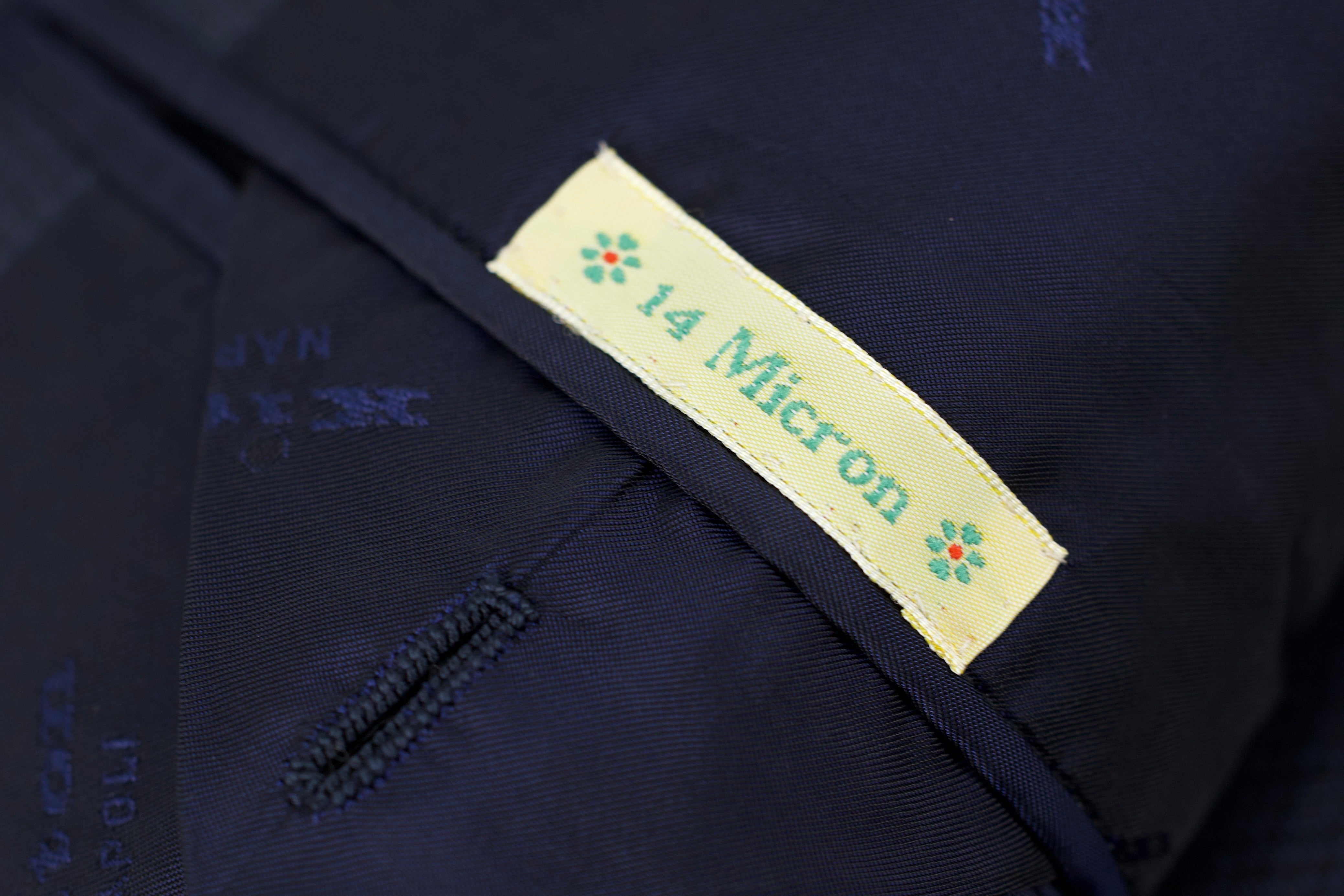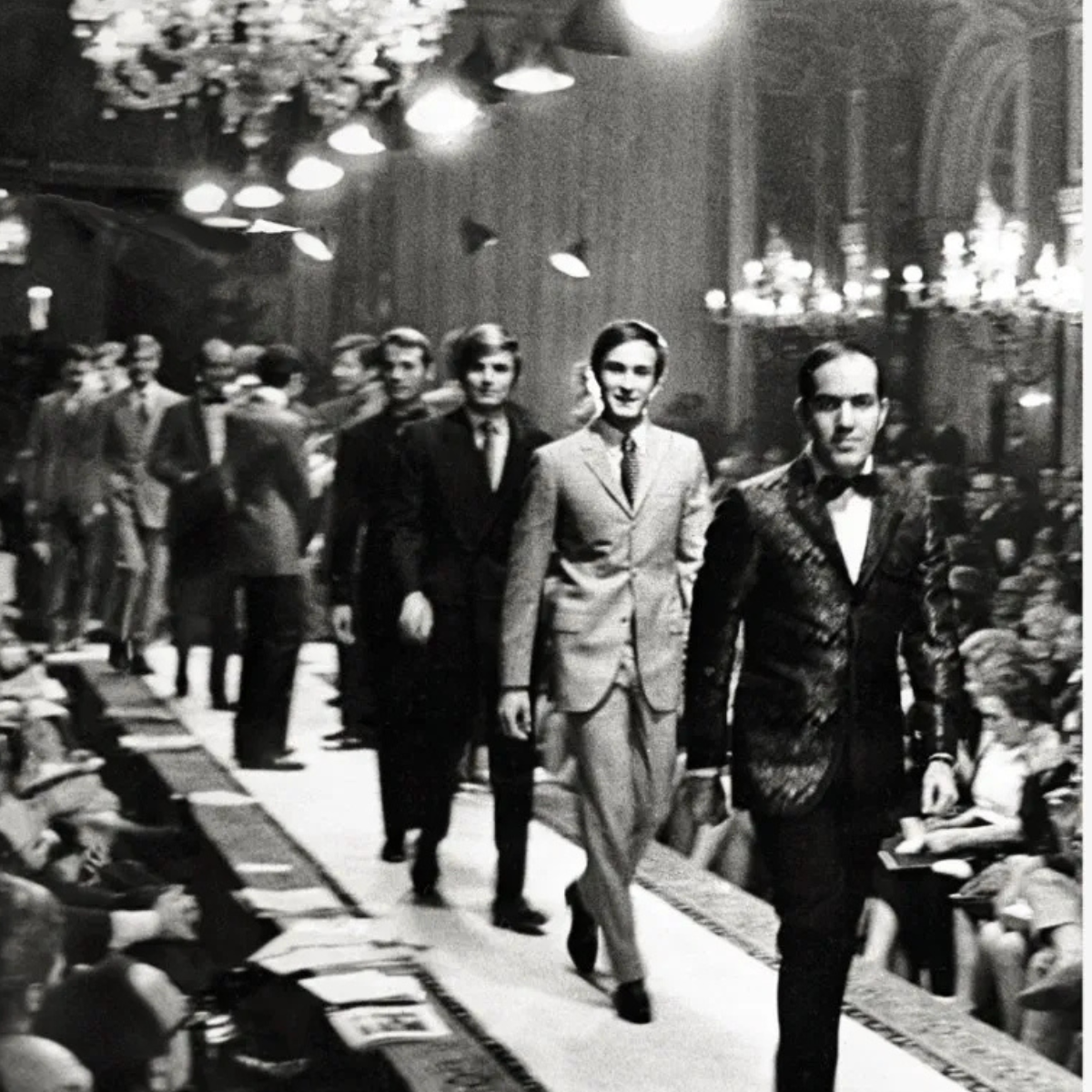Artikel: The Truth Behind the "Super" Fabric: A Guide to Super Wool and Its Meaning

The Truth Behind the "Super" Fabric: A Guide to Super Wool and Its Meaning
The Truth Behind the "Super" Fabric: A Guide to Super Wool and Its Meaning
If you’ve spent any time exploring the world of fine tailoring or browsing suits from brands like Brioni, Kiton, or Ermenegildo Zegna, you’ve likely come across the term "Super 100s", "Super 130s", or even "Super 200s." These numbers have long been a signifier of luxury in suiting - but what do they actually mean?
Let’s dive deep into the world of Super wool fabrics, explaining the history, meaning, and nuance behind those mysterious numbers, and why they matter to the sartorial connoisseur.
1. What Does "Super" Actually Mean?
The “Super” in Super 100s or Super 150s refers to a classification of the wool’s fineness, and more specifically, the diameter of the wool fiber used in the fabric. The higher the number, the finer the fiber.
These values are standardized by the International Wool Textile Organisation (IWTO), and they correspond directly to the micron count—the unit used to measure the diameter of individual wool fibers.
2. Understanding Micron Count
A micron (μm) is one-millionth of a meter. Human hair averages about 50–100 microns in diameter. Fine merino wool used in tailoring typically ranges from 18 to 19.5 microns, with superfine wool dropping even lower.
| Super Number | Wool Micron Diameter | Fabric Characteristics & Quality |
|---|---|---|
| Super 80 | 19.75 μm | Rugged and durable. Ideal for everyday business wear. Holds shape well. Heavier feel. Entry-level fine wool. |
| Super 90 | 19.25 μm | Slightly softer, still very robust. Suitable for regular suits and trousers that require longevity. |
| Super 100 | 18.75 μm | Balanced combination of comfort and resilience. Standard for high-quality off-the-rack suiting. Good crease resistance. |
| Super 110 | 18.25 μm | Softer and more refined. Lighter drape with improved comfort, suitable for frequent wear. |
| Super 120 | 17.75 μm | A noticeable upgrade in softness and elegance. Common among premium RTW and MTM suits. A good all-rounder for daily professional use. |
| Super 130 | 17.25 μm | Smoother handfeel and enhanced drape. Suitable for those who want refinement without sacrificing too much durability. |
| Super 140 | 16.75 μm | Increased luxury. Feels softer and more fluid. Best used in seasonal suits or formal wear where comfort and elegance are key. |
| Super 150 | 16.25 μm | Very refined texture and subtle sheen. Excellent for luxury suiting with elevated presence. Slightly more delicate, not ideal for everyday rotation. |
| Super 160 | 15.75 μm | Ultra-soft, with exceptional drape. Tailors beautifully but more sensitive to friction and pressure. Ideal for high-end MTM or bespoke. |
| Super 170 | 15.25 μm | Used for connoisseur-grade tailoring. Requires skilled craftsmanship. High wrinkle potential, best reserved for special occasions. |
| Super 180 | 14.75 μm | Pure luxury. Incredibly soft with fluid motion. Fabrics become noticeably more fragile. Often worn for single events. |
| Super 190 | 14.25 μm | Refined to the extreme. Requires gentle handling. Tailors like Kiton or Attolini may use this for ceremonial pieces. |
| Super 200 | 13.75 μm | Rare and exclusive. Feels like silk but wears like air. Expensive, often seen in collector-level suits. |
| Super 210 | 13.25 μm | Ultra-light and luxurious. Mostly found in limited edition fabrics. Best left for elegant occasions. |
| Super 220 | 12.75 μm | Close to the threshold of wool processing. Silken touch, delicate weave. A testament to textile engineering. |
| Super 230 | 12.25 μm | Prestigious and exclusive. Rarely produced. More often a showpiece than a practical garment. |
| Super 240 | 11.75 μm | Almost experimental. Requires extraordinary care. Reserved for ultra-bespoke or heritage clients. |
| Super 250 | 11.25 μm | Among the finest wool ever spun. More of a collector’s material than a functional fabric. Unparalleled finesse and rarity. |
These differences may sound microscopic (literally), but they drastically affect the fabric's softness, drape, weight, and durability.
3. A Brief History of the "Super" Classification
The “Super” terminology has its origins in the English wool trade. In the early 20th century, tailors and cloth merchants began using terms like “superfine wool” to denote higher quality.
But it wasn’t until the mid-20th century that the numbers became codified. The British Wool Textile Export Corporation introduced “Super 100s” as a marketing term to denote wool finer than traditional 18.5 micron merino.
The practice was later refined and standardized by the IWTO to protect consumers from misleading marketing. Today, the "Super" designation is strictly regulated, and wool must meet certain micron criteria to earn the classification.
4. Why Is Finer Wool So Valued?
For connoisseurs, the appeal of higher Super numbers is largely tactile and visual:
-
Softness: Finer fibers mean a silkier feel against the skin.
-
Drape: High Super fabrics fall beautifully, giving a refined silhouette.
-
Sheen: Finer yarns can produce a slight natural sheen, prized for luxury suiting.
But there’s a tradeoff...
5. The Durability Tradeoff: When Finer Isn’t Always Better
Here’s what most salespeople won’t tell you:
The higher the Super number, the more delicate the fabric.
That’s because finer fibers mean:
-
Weaker yarns
-
More prone to wrinkling
-
Less durable over time
While Super 180s–200s suits feel amazing, they’re often better for special occasions rather than daily office wear. For everyday suits, many tailors still prefer Super 100s to Super 130s—a sweet spot between refinement and resilience.
Cesare Attolini, for example, might offer a Super 150s flannel that feels luxurious but still wears well. Meanwhile, Zegna Trofeo, though labeled as Super 150s, is treated for added performance, making it more durable than its micron count suggests.
6. Super vs. Marketing: Not All Supers Are Equal
Luxury brands often go beyond the raw Super number and enhance the wool through:
-
Weaving techniques
-
Finishing treatments
-
Blend with silk, cashmere, mohair
So a Super 120s from Loro Piana might outperform a generic Super 150s from a lower-tier mill. That’s why origin matters—mills like Dormeuil, Scabal, Vitale Barberis Canonico (VBC), Zegna, and Loro Piana are prized not just for fineness, but for consistency and craftsmanship.
7. How to Choose the Right Super Wool
Tailoring is context. Ask yourself:
-
Super 100s – 130s: Best for daily wear. Business suits. Reliable and elegant.
-
Super 140s – 160s: Best for refined tailoring. Perfect for weddings or executive meetings.
-
Super 180s – 210s+: Best for collectors and enthusiasts. Luxury loungewear. Red carpet level. Handle with care.
Also consider climate: Super 150s wool can be lightweight and breathable in warm climates, but may lack structure in colder ones unless blended or flannelized.
8. Super Wool in the Sartorial World
Among connoisseurs, understanding Super wool is a sign of literacy in tailoring.
A gentleman might say: “This Kiton is Super 180s, but I still prefer my Rubinacci in Super 120s because of the body.”
Or: “This Tom Ford suit is made from Super 150s wool - it’s got that subtle sheen, very luxurious, but I wouldn’t wear it every day.”
In the end, Super wool isn't about showing off. It's about understanding the performance, craft, and suitability of a fabric.
Conclusion: The Poetry of the Micron
The world of Super fabrics is one of nuance - a perfect intersection of nature, science, and art. Each micron speaks of the sheep it came from, the hands that wove it, and the shoulders it will grace.
Next time you pick up a label that reads “Super 130s,” you’ll know it’s not just a number. It’s a story.



